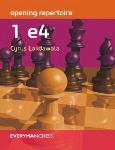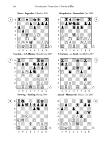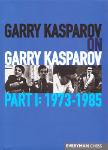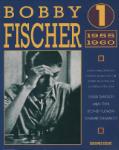/
Text
Contents
Colle-Zukerto rt Opening
The variation with d5
and c5
•Z The variation with d5,
but not c5
J The variation without d5
Opening repertoire for
White with l.d4
In this lesson we will lay the foundations for an
opening repertoire for White based on l.d4. Of
course we cannot discuss all openings at once. I shall
present some systems which I myself use.
White has two main ways of developing his king’s
bishop, either a fianchetto after g2-g3, or along the
fl-аб diagonal (normally on e2 or d3).
The first strategy leads to the following openings:
Catalan Opening, Queen’s Indian Defence with g3,
King’s Indian Defence, Griinfeld Defence or Benoni
Systems with g3. The second strategy leads to the
Queen’s Gambit, the Slav Defence, the Nimzo-
Indian Defence, the Queen’s Indian Defence with
e3 or various systems in the King’s Indian Defence,
Griinfeld Defence and Benoni.
However, White can avoid a lot of theory if he
limits himself to the Colle-Zukertort Opening (l.d4,
2.£f3 and З.еЗ). This is a particularly good choice
against those who play the Nimzo-Indian or Queen’s
Indian. Here is an example ofWhite’s strategy.
L.Psakhis
USSR Ch, Moscow 1983
l.d4 2.£if3 еб З.еЗ c5
An alternative is the immediate 3...d5.
4.1d3 d5
Another plan is 4,..b6. White can then transpose
to the Queen’s Indian by 5.0-0 Jib7 6.c4. This move
order allows White to avoid the best plan for Black:
1 .d4 £jf6 2.c4 еб 3.£)f3 b6 4.e3 Jlb7 5.jtd3 and now
either 5...Js.b4t or 5...d5 followed by ...<<bbd7 and
.. JLd6.
5.b3
This prevents ...c5-c4.
5..^e7 6.0-0 0-0 7.1B2 b6
Black is not exerting any pressure and White gets
what he wants.
8.£)e5!
Diagram 5-1
56
Opening repertoire for White with l.d4
White’s strategy is simple: occupy the e5-square
and control the other central square e41
8...1b7 9.&d2 £)c6 10.f4
An important move. White strengthens his control
over the e5-square. If Black now exchanges the
knight, White usually recaptures with the f-pawn, in
order to open the f-file.
10...cxd4?!
This exchange is almost always good for White,
since he gets the e-file and can defend the e4-square
even better.
Il.exd4 &b4
If ll...§c8, then you must guard against 12...£)b4;
the best way is with 12.a3.
12. Де 2 Ec8 13.c3 2)c6 14.^d3
Black has achieved nothing.
14...£d6 15.W13
15.We2 would also be good. White could then
bring a rook via f3 to h3, to prepare the attack.
15...^e7 16.Sael g6
All Black can do is defend.
17.®h3
Diagram 5-2
But this is not energetic enough! The immediate
17.g4! would be better.
17...h5! 18.Ы13 19.^g5
Despite the inaccuracy, White is clearly better here.
19...Дхе5 2O.fxe5 ^g4 21.Jfxf5 exf5 22.Дс1!
Black has problems: his dark squares are too weak.
But Psakhis defends his position very cleverly.
22...®e7 23.®g3 Даб 24.h3
It is even better to play 24.§f3 and then h3.
24...ДхП 25.hxg4 fxg4 26.Scfl 16 27.exf6 Sxf6±
Although Black later saved the draw, the position
was very much to White’s advantage.
Diagram 5-2
abcdef gh
Black has three main continuations against White’s
set-up: he plays d5 and c5, he plays d5 without c5, or
he plays without d5.
The variation with d5 and c5
A.Yusupov - N.Spiridonov
European Team Ch, Plovdiv 1983
57
Opening 1
l.d4 2.&B еб З.еЗ c5 4.1d3 d5
4...b6 is the alternative.
5 .b3 ^c6
This is the most active position for the knight.
6 .ЯЬ2 Де7
6... Jld6 is an interesting alternative. After 7.0—0
0-0 a transposition to the Queen’s Indian is possible:
8.c4 b6 9.^c3 tb7 10.Be2±.
If instead Black plays 7...Wc7 (intending either
...e5 or ...cxd4 followed by ...£)b4) or 7...We7, then
White may also reply 8.c4!?.
7.0-0 0-0 8.&bd2
Diagram 5-3
White develops his pieces very harmoniously. The
bishops are working along adjacent diagonals and
putting pressure on the opposing castled position.
8...b6 9.?Ie5 £)b4
This does not achieve much for Black. There
are decent alternatives in 9...ДЬ7!?± or 9...£ixe5
10.dxe5±.
1О.Де2ЯЬ7 Il.f4£)e4!?
This is the only weakness in the white position.
12.£lxe4!
White immediately swaps off the strong knight and
‘plugs’ the e4-weakness.
12...dxe4 13.a3 £ld5
13...£lc6± deserved consideration.
14.Bd2 Ec8?!
Black makes an error: he is not worried about the
strong e5 knight. The immediate 14...f6± would be
better.
15.c4 16.Sadl± JLd6 17.dxc5!?
White opens the diagonal for the bishop.
17...Дхс5 18.Wc3 We7 19.6’?
Diagram 5-4
White also wants to open the f-file.
19.^d7 Jlxe3t 20.®xe3 £)xd7 would not be so
clear-cut. While if 19.b4, then 19...ild6 2O.£)g4
£)e8.
19...exf5 20.Sx6 ДхаЗ?! 21.ДхаЗ ВхаЗ 22.йх£б!
White wants to open up Black’s castled position.
22...gx£6 23.^g4
Threatening £ixf6t, as well as Wxf6 followed by
£h6#.
23...Sc6 24.£lxft>t Sxfti 25.Wxft> Bxb3 26.^f2!
58
Opening repertoire for White with 1 .d4
Wa4?
A mistake in an already lost position. If 26...Wb4,
then 27.3d7 Jla8 28.Se7! followed by Se5.
Diagram 5-5
27.®g5t &h8 28.We7
And Black resigned, in view of 28...Sb8 29.We5t.
The variation with d5, but not c5
A. Yusupov — M.Drasko
Sarajevo 1984
l.d4 2.£>f3 еб З.еЗ Ь6 4.jLd3 ILb7 5.0—0 d5
6.£le5
6.£lbd2 is also possible; another option is 6.b3.
6..J.d6 7.f4 0-0 8.&d2 & e4l?
Otherwise White would be able to control the e4-
square with Wf3.
9.c4l?
After 9.Bf3?l comes 9...f51. But 9.^xe4 dxe4
10.JLe2 is an alternative.
9...&d7
Ihis move is not a mistake.
Also possible is 9...f6 10.cxd5 ^xd2 11 Jf,xd2!
(if H.lxh7t?I, then &xh7 12.Wh5t &g8 13.£g6
Jtxd5+; after H.Bh5 there follows 11..T5
12.JLxd2 lxe5! 13.fke5 Bxd5 14.We2±) H...lxe5
(H...fxe5 12.fxe5 gives White a strong initiative)
12.foe5 (12>h5 f5 13.fxe5 Bxd5 14.We2±)
12...Wxd5 13.Be2 f5±.
Diagram 5-6
10.cxd5 exd5?
10...^ixd2 was necessary; White should then prefer
1 l.Jj.xd2!?± to H.£ixd7 £)xfl 12.^xf8 ^хеЗ=.
1I.£ixe4!
3his is how White plugs the weak point on e4. At
the same time Black has problems with the strong
knight on e5.
1 l...dxe4 12.Дс4±
Now f7-f6 is not possible.
12...Ш
12...^xe5 13.fxe5 is very dangerous for Black.
13.Wb3We8 14.^.d2c6 (A...b5) 15.a4! £>d5 16.a5
Even better is 16.§acl, threatening §hxc6.
16...Sb8!
59
Opening 1
Diagram 5-7
abcdefgh
If 16...b5?, then 17.ilxd5 cxd5 18.a6+-. After
16...jLxe5 comes 17.fxe5 ®e6 18.a6±; the immediate
16...®e6? is also bad due to 17.a6!.
17.a6
17.axb6 axb6 18.Jlxd5 cxd5 19.®xb6 was not
enough for me. After 19...®e7 (19...®d8 2O.@xd8
Sfxd8 21.Jla5±) there is the threat of 20...f6.
17...la8 18.Sfcl b5 19.1xd5 (19.ie2!?) 19...cxd5
2O.^.b4!?±
Diagram 5-7
2O...lxb4 (20...®e7!?) 21>xb4 ft 22.&g4 Wd7
23.&f2 (A£)dl-c3) 23...Sfc8 24.Ы1 (24.Sc5!?)
24...Sxcl! 25.Sxcl Sb6 26.Sal JLc6
After 26...®d6?I there follows 27.®c5! b4 28.®c8t
Bf8 29.Scl±.
27.£1c3 <&f7 28.h3
The immediate 28.Sa5 would not be so good,
because of 28...Sg4 with counterplay.
28.. .6?
The correct move was 28...We7!=.
29.Sa5!±
With a blockade on the dark squares and the plan
of <Йа2, Bc5, £)b4. White went on to win the game.
The variation without d5
A.Yusupov - A.Beliavs
Austrian Team Ch 1999
l.d4 £ft 2.&13 еб З.еЗ b6 4j.d3 lb7 5.0-0 c5
6.c4
6.b3 is one alternative.
6...ILe7 7.^c3 cxd4
After 7...0-0 comes 8.d5 exd5 9.cxd5±.
7...d5?l 8.cxd5 exd5 9.Jlb5tI is very unpleasant for
Black: 9...ic6 10.®a4 ixb5 ll.Wxb5+ Bd7 12.^e5
Bxb5 13.^xb5 &a6 14.Sdl 0-0 15.^c6±.
8.exd4 d5
This is now the best option for Black. If 8...d6, then
9.d5! e5 10.£lg5 give White the initiative.
Diagram 5-8
9.cxd5 £ixd5 10.£le5
Now 1О.ДЬ5| is not so strong after 10...ilc6. Here
ll.Wa4 Sd7 12.£)e5? is bad, due to 12...^xc3.', so
White would do better to play 1 l.jLc4!?.
60
Opening repertoire for White with 1 .d4
10...0-0 1 l.Wg4
ll.Wh5 is perhaps more accurate, because now
Black could exchange on c3.
12.Ж4 2>bd7?!
12...£e4!? 13.Bh3 ®xd4 14.£xf7!? 2xf7 15.^xe4
Дхе4 16.Bg4± offers White a pleasant endgame.
IS.Edl! 2)e4
If 13...g6, then 14.jLg5= (or 14.jLh6±).
14 .Wh3 £dft
Things appear good for Black, but White has a
strong idea which I knew from a game of S. Polgar.
Diagram 5-9
15 .d5I! £>xc3
15... exd5?? loses on the spot to 16.JLxe4.
16 .bxc3 JLxd5
16... exd5 loses the exchange: 17.^d7! h6
(17...@xd7?? 18.1xh7t+-) 18.W8 ®xf8 19.1e3
@c8 20.®xc8f Sxc8 21.jLd4± Yusupov - Shneider,
Moscow 2003.
17.1g5 h6?
17...g6 would be more stubborn, although after
18.®h4 (threatening c4) the position is better for
White.
Diagram 5-10
18.ДхЬб! gxh6 19.®xh6 Wc7?I
Also bad are 19...®b8? 2O.^d7+- and 19...Se8?
2O.JLg6!+-.
19...®c8!? would be somewhat more resilient:
20.c4 jib7 21 .Wg5t ^h8. But here too White wins
after 22.Sei! and then Se3-h3.
20.®g5t ®h8 21.Wh4t
Black loses his queen after 21...^g7 22.Wg3t
followed by £lxf7t.
1-0
dhe test which follows should help improve your
understanding of the typical ideas behind the Colle-
Zukertort. Try to consider the exercises as though they
were situations from a game and to make a decision
after a maximum of 10 minutes thought. The score on
this test is not so important. But it is very useful to go
on to study both the solutions and the sample games
very thoroughly and to remember the typical ideas.
Please solve them in order, since some exercises are
linked to ones you have studied previously!
Diagram 5-9
abcdefgh
Diagram 5-10
abcdefgh
61
Exercises
ХЕх. 5-1X
abcdefgh
XEx. 5-4 X ★
8
7
6
5
4
3
2
1
abcdef gh
abcdefgh
XEx. 5-3 X
abcdef gh
abcdefgh
62
Exercises
>Ex. 5-8 4
abcdef gh
63
Solutions
A.Yusupov - A.Kosten
Bundesliga 2001
l.d4 £f6 2.£f3 еб З.еЗ b6 4.1d3 ^b7 5.0-0
d5 6.£e5 le7 7.£d2 4ibd7 8.F4 c5 9.b3 0-0
10.JLb2 <?1е4 1 l.^xe4 dxe4 12.Дс4 JLd5
Diagram Ex. 5-1
13J.xd5!
(1 point)
13...exd5 14.£)c6®e8 15.£)xe7t
15.dxc5 Дхс5 16.Bxd5 JLxe3t 17.ФЬ1±
15...Wxe7 16.dxc5 bxc5
16...&XC5 17.Ш4 F6 18.®xd5t±;
16...Wxc5? 17.Wg4+-
17.Wxd5±
(1 point for this variation)
17...&Б6 18.®h5 Efd8 19.Badl c4 20.1d4
Sac8 21.c3 «5 22.B4 £ia4 23.§d2 a6 24.gfdl
Веб 25.®a5 ®c6 26.BF5 ®d5 27.®g4 ®d7
28.®h5 Веб 29.®a5 Wc6 30.®f5 ®d5
31.Де5!+- ®a8 32.8d7 Sxd7 33.Sxd7 ®c6
34.®g4 g6 35.®h3 h5 36.Sd6 ®e8 37.Jlxft>
a5 38.6 Eb8 39.Jld4
1-0
13.®g3
13.®h3 h6!±
13...0-0 14.2ИЗ!?
14.e4 dxe4 15.^xe4 Дхе4 16.JLxe4±
14...Eac8?
See Ex. 5-3. Better was 14...h6.
Ex. 5-3
A.Yusupov - P.Scheeren
European Team Ch, Plovdiv 1983
15.^ig5!±
(2 points)
15...g6
15...h6? 16.^h7!+-
16.®h4! h5 17.BadlI?
17.Bf4±
17...^h7?
See Ex. 5-4. Better was 17..®c7 18.Wd4
Bc5 19.Bf4±.
Ex. 5-4
A. Yusupov — P.Scheeren
European Team Ch, Plovdiv 1983
18.®xh5!
Ex. 5-2
A. Yusupov — P.Scheeren
European Team Ch, Plovdiv 1983
l.d4 £1F6 2.£jf3 еб З.еЗ c5 4.JLd3 d5 5.b3
£bd7 6.^b2 b6 7.0-0 ib7 8.£e5 (8.£bd2
<§be41) 8...a6 (8...^xe5 9.dxe5->; 8...Де7)
9.^d2 b5 (9...4^e4 10.Jkxe4 dxe4 ll.£}xd7
®xd7 12.£k4±; 9...1e7) 10.£xd7 ®xd7
(10...*?)xd7?! Il.c4±)
Diagram Ex. 5-2
1 l.dxc5!?
(2 points)
11.c4?! dxc4 12.bxc4 cxd4 13.exd4°°
ll..^xc5 12.®f3!± 1е7?!
12...d4? 13.^e4!±
12...®e71? 13.®g3 0-0 (13...id6?l 14.®xg7
§g8 15.®xf6! Sxg2t! 16.&xg2 d4t 17.1e4±)
14.a3!?±
18...Jlxg5 19.JLxg6 ft> 2O.f4+-Bg7 21.fxg5
£)xg5 22.h4 £)e4
22..Ж7 23.Sd4 f5 24.ixh7t Bxh7
25.Sg4f feg4 26.®g5t+-
23.Jlxe4 dxe4 24.Sf4
Black resigned, at the prospect of 24...Wh7
25.®xh7t ФхЬ7 26.Sd7t.
Ex. 5-5
A.Yusupov - G.Sosonko
Tunis Interzonal 1985
l.d4 “?lf6 2.^f3 еб З.еЗ d5 4.JLd3 g6 5.b31?
ig7 б.^аЗ! &bd7 7.^bd2 c5 8.0-0 0-0
9.c4± Ba5 (9...b6?l 10.cxd5 exd5 [10...£lxd5
ll.£e4±] ll.Scl±) 10.1b2 §d8 H.Be2
cxd4!? 12.Jkxd4!? (12.exd4 b61? A...dxc4,
...Wh5) 12...^c5 13.^c2 <^ce4 (13...1d7
64
Solutions
14.a3!±) 14.£)xe4 dxe4 (14...£)хе4?! 15.J^,xg7
^xg7 16jLxe4 dxe4 17.Wb2f f6?l 18.Б4!?
Bc7 19.^d2!? Bc6? 2O.b5+-) 15.^e5 ^d7?
(15...&e8 16.f4 exf3 17.Bxf3 f6±)
Diagram Ex. 5-5
16.F4!
(2 points)
16.f3?! (1 point) 16...£)e8! 17.£>xd7 Sxd7
18.^xg7 exf3!±
16...И5 17.Badl 1е8 18.1bl± Wa3 19.h3
Sac8 2O.Sd2 Ь6 21.Sfdl We7 22.®f2!
(AWh4, ^xe4) 22...В5?!
22...Bb7!? (А...Ш ...f6) 23.g4! hxg4
24.hxg4 £)d7 25.g5± or 25.£)xd7.
23.c5 Ь4 24.Bh4 Sc7 25. g4 hxg4 26.hxg4+—
Edc8 27.&C4! 1с6?! 28.1e5 Sd7 29.&d6
Ecd8 3O.Sh2 &d5 31.&f2!
White threatens Sdhl followed by Wh8f.
Black resigned in view of: 31...&f8 32.Sdhl
£)g8 (32...Sc7 33.Bh8t!+-) 33.1xg7t &xg7
34.®h7t &f8 35.Wxg8t! <±>xg8 36.Sh8t &g7
37.Slh7t Ф16 38.g5#
Ex. 5-6
A.Yusupov - R.Burnett
Philadelphia 2002
l.d4 £T6 2.£)f3 еб З.еЗ b6 4JLd3 JLb7 5.0—0
d5 6.^e5 ie7 7.b3 0-0 8.&d2 £3bd7 9.f4
£)e4 10.“?lxe4 dxe4 ll.JLc4 .ad 5 12.JLa6 £ib8
(12...f5 13.c4 £)xe5 14.cxd5; 12...f6 13.c4)
13.Де2 f6 14.£}g4 g6?! 15.c4 JLb7 16jLb2
<?3d7 17.Wc2 f5 18.£le5 £)xe5 19.fxe5 ag5
2O.Wc3 ah6 21.Sadl± сб?! (21 ...Wg5 22.Sf4
Be7 23.d5!? [or 23.Sf2 Wg5 24.tcl]) 22.^a3
Sf7 23.g3!? (23.^d6 Bg5 24.Sf4 Sd8=) 23...a5
(23...®g5 24.&f2±) 24.id6 ia6 25.Sfel £f8
Diagram Ex. 5-6
26.d5!
(2 points)
26.c5 (1 consolation point for either this or
26.jLxf8) 26...^,xe2 27.Sxe2 b5=
26...cxd5?
26...exd5! 27.cxd5 Jbce2 28.Sxe2 cxd5
29.Sxd5 Sc8 3O.Bd4±
27.cxd5 Jbcd6
27...exd5 28.Jtxa6 Sxa6 29.Sxd5±
28.exd6
28.dxe6 Sc7 29.Bb2 ^d3 (29...^xe2
3O.Sxe2 Sc6 31.Sed2±) 3O.JLxd3 JLb4
(3O...JLxe5 31Bxe5 exd3 32.Sxd3 Wxd3
33.Bxc7±) 31JLxe4 JLxel03
28...Sd7??
28...exd5 29.JLxa6 Sxa6 3O.Sxd5±; best is
28...e5!±.
2 9. хаб
1-0
Ex. 5-7
A.Yusupov - E.Rozentalis
Elista Olympiad 1998
1 ,d4 £lf6 2.£)f3 еб З.еЗ b6 4.j^,d3 JLb7 5.0-0
c5 6.c4 JLe7 7Ac3 cxd4 8.exd4 d6 9.d5! e5
10.^g5 £bd7 (10...h6 ll.£ge4±) 11.f4 Sc8
(ll...g6? 12.f5->; 11...0-0) 12.b3’? (12.We2)
12...a6? (12...h6 13.^ge4± [13.<§3e6 fxe6
14j^g6t Ф£8 15.dxe6^1c5“]; better is 12...0-0
13.fxe5 [13.^.f5 h6 14.fxe5 dxe5] 13...dxe5±)
13.a4!± 0—0 (better is 13...h6 14.(t}f3)
Diagram Ex. 5-7
14.Sa2!
(2 points)
The rook will join the kingside attack.
14...h6 15.Eaf2!
15. 4jge4 ?lxe4 16.jLxe4 f5#; 15.fxe5
^xe5=
15...exf4
15. ..hxg5 16.fxg5 *?)h7 17Jlxh7t *^?xh7
18>h5t &g8 19.Sxf7 Exf7 2O.Wxf7t
&h8 21.§f3 ^£8 22.Sh3f ^h7 23.g6 ih4
24.Bxb7+-
16 .£)h3 £)e5
16... g5 17.W4 gxf4 18.^xf4 Фё7
19.1xh6t &xh6 2O.Bd2t &g7 21>g5t
ФЬ8 22.Sxf6 £)xf6 23.Sxf6 ^xf6 24.Wh6t
&g8 25.Bh7#
17.1Ы!
17 .^f5 g5I?
17... B!
65
Solutions
Or 17...g5 18.W4 gxf4 19.1xf4 £fg4
2O.jLxe5! and now:
a) 20...&xe5 21.Bc2 &g6 (21...F5 22.Hxf5
®d7 23.Sxe5! Sxflt 24.&xfl dxe5 25.®h7t
&f8 26^g6+-) 22.Hxf7 Sxf7 23.Wxg6t gg7
24.We6t &h8 25.®xh6t &g8 26.1f5+-
b) 2O...W2 21.Sx£2dxe5 (21...^h4 22.Sf6
dxe5 23.®g4t lg5 24.@e4 &g7 25.Sg6f
ФЬ8 26.Sxh6t+-) 22.Wg4t! ^g5 23.®f5+-
18.gxf3 §e8?
A better defence is 18...Wd7 19.^f4±
(Xtb7).
19.Sg2 Ф118 2O.f4 £W7
See Ex. 5-8.
2O...£)g6 21.jLxg6 fxg6 22.®c2 is also good
for White.
Ex. 5-8
A. Yusupov — E.Rozentalis
Elista Olympiad 1998
21.&g5!
(2 points)
Continuing the attack.
21...&g8
21...hxg5 22.fxg5 £)h7 23.JLxh7 ФхЬ7
24.®h5t &g8 25.®xf7t M8 26.Hg3+-
A better try was 2 l...Hf8±.
22.&Ы (AHfgl) 22...jlf8 23.ib2 Ee7
See Ex. 5-9.
Ex. 5-9
A. Yusupov - E.Rozentalis
Elista Olympiad 1998
24.£)ge4!+-
(2 points)
Equally good is 24.^ce41.
24...Be8
24...^xe4 25.&xe4 Bc7 26.Bh5+-
25.^fgl Sc7
25...g6 26.f5 g5 27.£)xg5 hxg5 28.Hxg5t
&h8 29.®h5t!
25...£)c5 26.£)xf6t ®xf6 27.®c2 g6 28.^e4
26.Bd4
Aiming at the weakness on g7. The
alternative 26.®d3 was also strong.
26...&h8 27.SW6
Black resigned, in view of 27...JLxd6
28.Hxg7, threatening Hxh7#.
Ex. 5-10
A. Yusupov — P.Schlosser
Bundesliga 1997
l.d4 £lf6 2.£}f3 еб З.еЗ c5 4.Jtd3 ‘йсб 5.0—0
d5 6.b3 JLd6 7.JLb2 0-0 8.c41? ®e7 (better
is 8...b6) 9.#k3 cxd4 10.exd4 Jla3 1 l.®cl!
(Il.£xa3 ®xa3 12.c5 b6!#) Il...ixb2
12.®xb2± dxc4?l (12...Sd8) 13.bxc4 §d8
14.Hadi b6
Diagram Ex. 5-10
15.d5!
(2 points)
15...£)a5
15...®b4l? was a better defence. If 15...exd5,
then 16.£)xd5 £lxd5 17.cxd5 gives White a
strong attack.
16.Hfel ®c5? (16...h6!) 17.£)e4! £)xe4
18.1xe4
18.Hxe4 exd5 19.cxd5 JLf5=
18...ДБ7!
See Ex. 5-11.
After 18...^)xc4? would come 19.®c2 exd5
2O.Hxd5 Sxd5 21.Jlxd5+—.
If 18...exd5? 19.®e5I! £lxc4 (19...^g4
2O.Hxd5 Hxd5 21.Jlxd5 Jlxf3 22.Jlxa8 Jlxa8
23.Bb8t ®f8 24.He8+-), then 2O.^xh7t
&xh7 21.®h5t &g8 22.^g5+-.
Ex. 5-11
A.Yusupov - P.Schlosser
Bundesliga 1997
19.^g5!
(2 points)
19.®e5 (threatening ДхЬ77) is met by
19...h61.
19.dxe6? runs into 19...Hxdl 2O.exf7t &f8!
21.Hxdl JLxe4+.
66
Solutions
1 point for the more complicated variation
19.^xh7t! &xh7 2O.^g5t &g8 (or 20...&g6
21.h4 Bxc4 22.h5t &xh5 23.@xg7+-)
21.®c2 g6 22.^xf7! &xf7 23.§xe6 2g8
24.Be4 Sg7 25.Sd3 with a winning attack.
19...h6
19...^xc4 20JLxh7t &f8 21.We2! ^xd5
(21...Sxd5 22.£xe6t’! fxe6 23.Bxe6 Sxdl
24.®g8#) 22.Bh5±
20.1h7t &h8
20...ФЙ 21.Ш71! &xf7 22.Sd3+- (or
22.Be5+-)
21 .^xrt &xh7 22.®c2t!
22.^xd8? Sxd8 23.Sxe6 £)xc4#
22... &g8
After 22...g6 23.^xd8 (or 23.Sxe6 2g8
24.£e5+-) 23...Sxd8 24.gxe6 Sg8 25-Sdel
a) 25...Bxc4 26.Se7t Sg7 27.ВБ2+-
b) 25...^xc4 26.Se7t (26.Sxg6? Sxg6
27.Se6 ^e5!) 26...Sg7 27.2xg7t &xg7
28.Se6+—
c) 25...^c8 26.Se7t Sg7 27.Sxg7t &xg7
28.®c3t+-
23.^xh6f! gxh6 24.Wg6f+- sl?f8 25.Wxh6f
&g8
25...Ф17 26.Bh7t (or 26.dxe6t &g8
27.Sxd8t Sxd8 28.Bg6t+-) 26...Ф18
27.dxe6+—
26.Bg6t ФА8 27.Bftt &g8 28.Ee5
1-0
Ex. 5-12
A. Yusupov — H.Teske
Bundesliga 1995
l.d4 e62.c4 Ь6 3.^f3^,b7 4.e3 ^f6 5.^d3 c5
6.0-0 £le7 7.£)c3 cxd4 8.exd4 d6 9.b3 (9.d5!)
9...0-0 1О.ДЬ2 ^bd7 11.Sei a6 12.h3I?
Sa7?I 13.Se3 Wa8 14.Be2 b5 15.Sel± bxc4
16.bxc4 Se8
Diagram Ex. 5-12
17.^1g5
(2 points)
White launches an attack.
17..J.18
17...^xg2 18.d5 h6 19.Ш7+-
18.£)xf7!?
18.d5I? e5 19.f4 is another way to proceed.
18...sl?xf7 19.Exe6 Sb8?
Black should play 19...g6! although White’s
attack persists after 20.d5 (intending £)e4;
less good is 20.f4 ёхеб 21.Bxe6f ^?g7 22.d5
£lc5) 20...£)e5 21.f4 £)xd3 22.Bxd3 Sxe6
23.dxe6f (23.Sxe6 JLc8) 23...^?e8 24.e7 Дхе7
25.Bxd6.
2O.Exfi6t!
1-0
Scoring
Maximum number of points is 23
20 points and above >Excellent
16 points and above >Good
11 points >Pass mark
If you scored less than 11 points, we recommend that you read the
chapter again and repeat the exercises which you got wrong.
67



